Recent Articles
Popular Makes
Body Types
2018 Buick Encore Road Test and Review
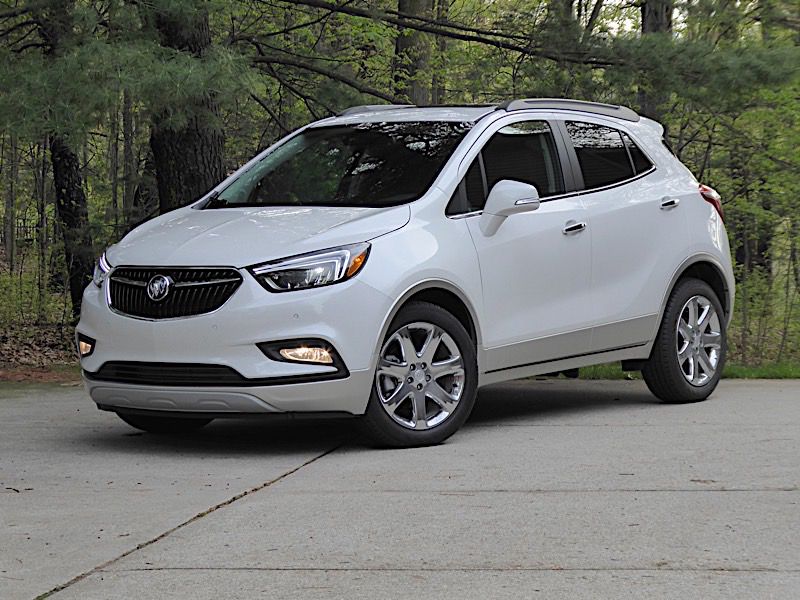
2018 Buick Encore ・ Photo by Ron Sessions
With a long-standing reputation for building well-equipped mid-size and full-size sedans, Buick might be one of the last brands buyers think of when it comes to small crossover SUVs. General Motors hasn’t always been successful at staying on top of changing vehicle preferences, but in the case of the Buick Encore, the automaker’s crystal ball was right on target when it got in the fast-growing subcompact crossover market six years ago. For the last several years, the tiny SUV has been the brand’s best-seller.
While the 2018 Encore carries over mostly unchanged from the 2017 model, new standard features include a capless fuel filler on all trims and an ionizing interior air filter and HD radio in the Premium model.
Urban Adventure Wagon
The Buick Encore is short and maneuverable, its 100.6-inch wheelbase ideal for zipping around crowded urban and suburban congestion and slipping into tight parking spaces. It’s nearly two feet shorter than the Honda Accord sedan, and even 1.4 inches more abbreviated than the MINI Countryman. Even so, the Encore is tall and surprisingly roomy. It towers over the Accord by more than 8 inches and sits at about the same height as the GMC Acadia or Cadillac XT5 mid-size SUVs. What the Encore may give up in horizontal real estate it gains back in vertical space for five passengers and their cargo.
The Encore may be a small vehicle but its standard equipment list is large. There are six Encore models — base, Preferred, Sport Touring, Preferred II, Essence, and Premium — each with their own strong value proposition. Including $995 destination and delivery, Encore model prices range from $23,985 to $31,595. On-demand all-wheel drive, available on all but the base Encore, adds another $1,500.
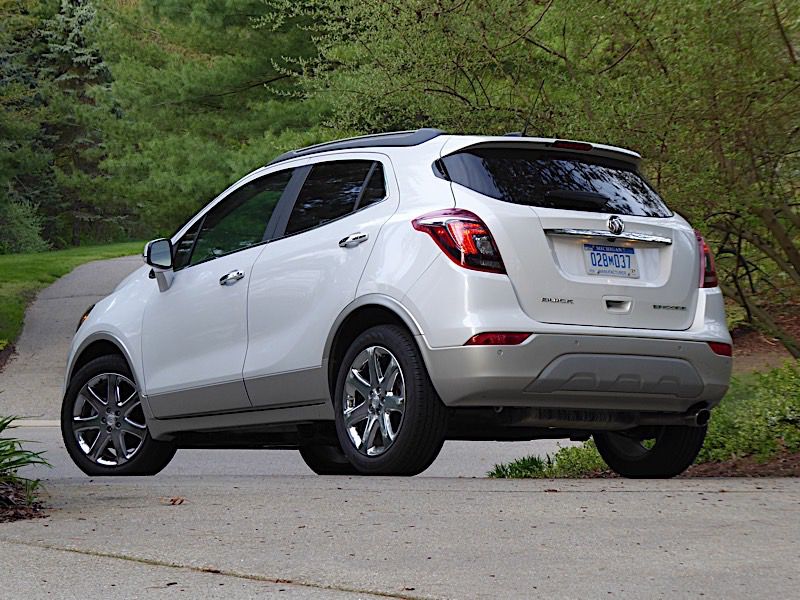
Photo by Ron Sessions
Pretty Dashing
An elevated seating position gives the Encore’s driver and passengers a good view of their surroundings. However, it’s not the big climb up some SUVs make their buyers endure. In terms of passenger volume, the Encore is about as roomy as its Chevrolet Trax sibling and more spacious inside than the Infiniti QX30 or Toyota CH-R. But mostly, the Encore dispels the notion that buyers must forgo comfort and convenience items when purchasing a small car. Materials, fit, and finish are a cut above many other small crossovers. Active noise cancellation that works through the vehicle speakers to counteract booming sounds and acoustic glass help keep the Encore’s cabin surprisingly quiet.
Standard amenities on all models include a power driver’s seat, a leather-wrapped steering wheel, keyless entry and starting, air conditioning, dual gloveboxes, and a fold-flat front passenger seat. Preferred II and above models add dual-zone automatic climate control, and Essence and Premium models bring leather seats, a power front passenger seat, heated front seats, a heated steering wheel, and driver’s seat memory. A power moonroof is optional.
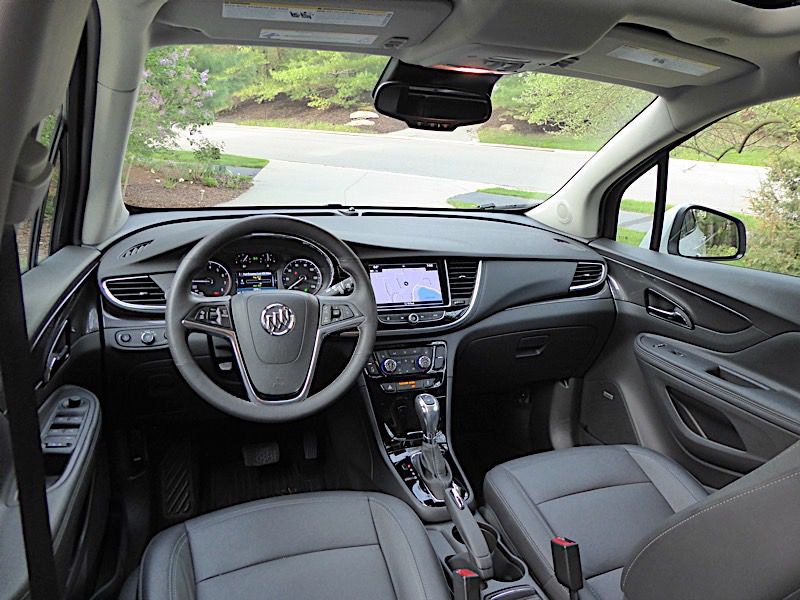
Photo by Ron Sessions
Infotainment and Connectivity
While up to date, Encore keeps infotainment simple with a standard voice-activated IntelliLink 6-speaker AM/FM stereo, 8-inch color touchscreen, easy-to-use volume knob, and dedicated up/down tuning buttons. OnStar 4G LTE with a built-in Wi-Fi hotspot is also standard, as is SiriusXM satellite radio, Bluetooth phone connectivity and audio streaming, and Apple CarPlay and Android Auto compatibility. Premium models add a seven-speaker Bose premium audio system and HD radio. Navigation is optional.
Buick Connected Access, giving Encore owners access to remote locking/unlocking and other features via cellphone, is free for the first 10 years.
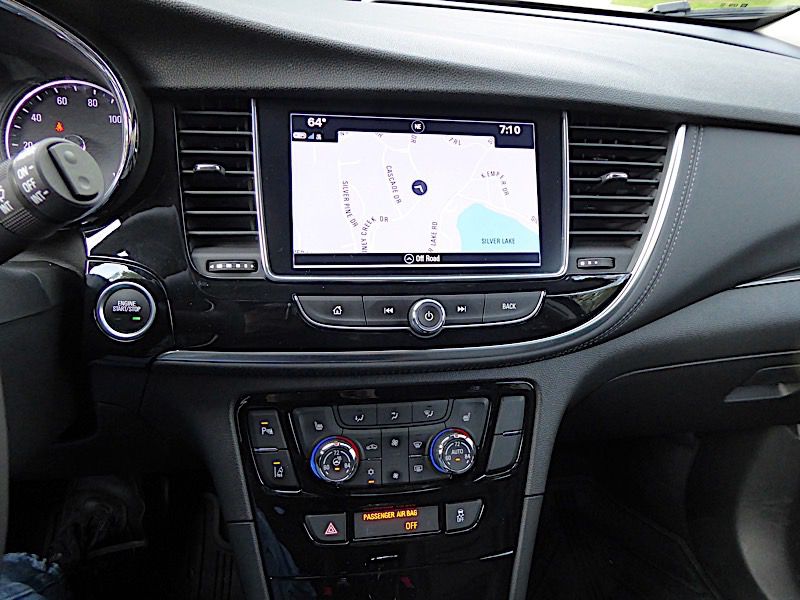
Photo by Ron Sessions
Back Seat Action
Despite the Encore’s small overall size, the back seat isn’t a bad place for two adults on an extended drive. Because of the intrusion of the driveline tunnel and rear edge of the front seat console, the middle rear position is really just for kids.
The folding rear seat is split 60/40 and includes a center armrest with cup holders. The rear seat headrests are large and restrict rearward visibility, but they can be lowered almost flush with the tops of the rear seatbacks when unoccupied to improve the driver’s rear sightlines.
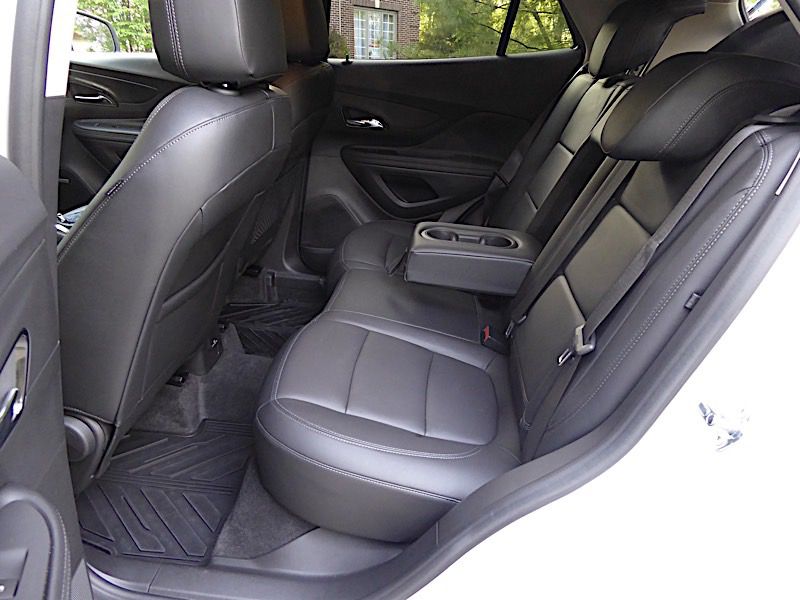
Photo by Ron Sessions
Cargo Area
With the rear seatbacks up, there’s a minimum of 18.8 cubic feet of cargo space available. That's plenty of space for several bags and a run to the airport, and quite a bit more luggage space than in the trunk of the full-size Buick LaCrosse — but only slightly more than half as much space as in the new Buick Regal Tour X wagon. A cargo shade is standard on Preferred and higher Encore models.
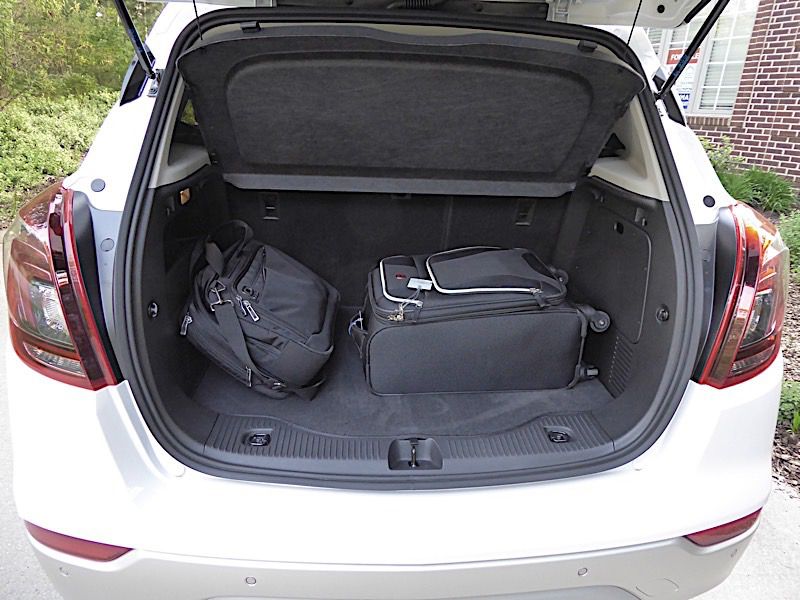
Photo by Ron Sessions
Max Cargo
In order to configure the Encore to provide its maximum 48.4 cubic feet of cargo space, you must first pivot the rear seat bottom cushions forward (this may also require sliding the front seats forward a bit) before folding down the rear seat back cushions. The rear cushions don’t fold completely flat with the cargo floor.
One neat feature is the fold-flat front passenger seat which allows owners to carry long items such as ladders or lumber inside with the rear hatch closed.
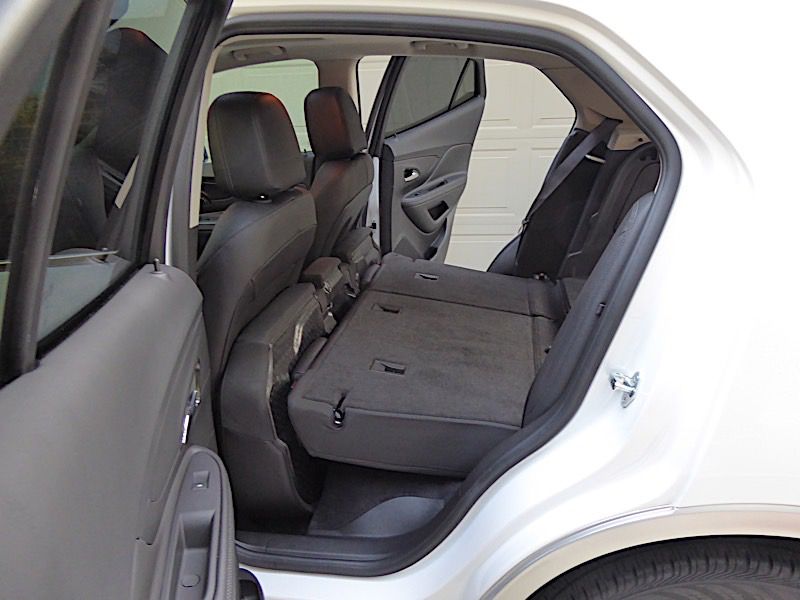
Photo by Ron Sessions
Turbocharged Powerplants
The Encore’s standard engine is a port-injected 1.4-liter turbocharged four-cylinder with variable valve timing. While its 138 horsepower and 148 lb-ft of torque are competitive for the segment and sufficient to move the SUV’s 3,300-lb-or-so curb weight with ease around town, an optional direct-injected 1.4-liter turbo with 153 horsepower and 177 lb-ft of torque is the better choice, especially for freeway driving. The latter is an $895 option on Sport Touring and higher models and includes a stop/start feature that shuts off the engine at stoplights to save fuel.
The more powerful direct-injected engine is also more fuel-efficient. Whereas front-drive versions of the base engine achieve an EPA rating of 25 mpg in the city and 33 mpg on the highway, the optional engine gets a 28 mpg city/34 mpg highway EPA estimate. All-wheel drive cuts fuel economy estimates by 2 to 3 mpg.
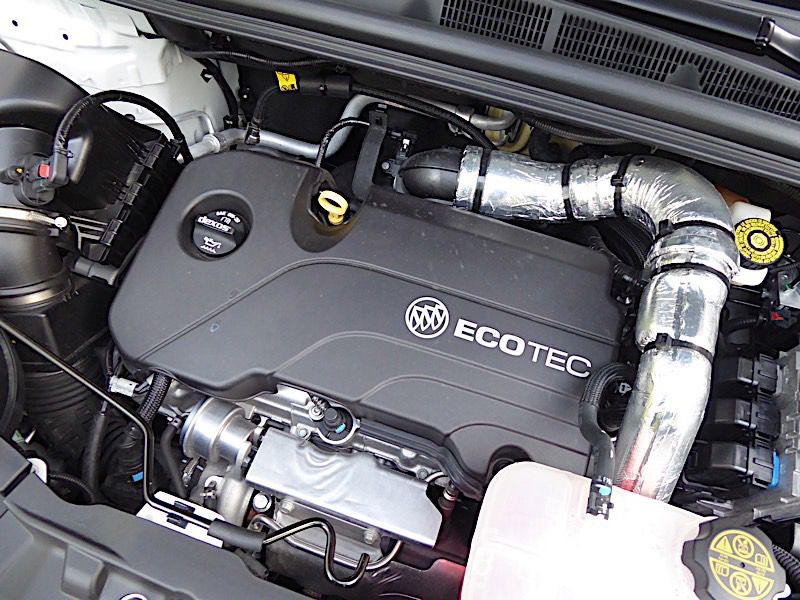
Photo by Ron Sessions
Shifty Business
Regardless of engine choice, all Encore models come standard with a smooth and responsive six-speed automatic transmission. No paddle shifters are available, but the driver can manually upshift and downshift for handling steep grades or sketchy weather using the tap-shift button atop the transmission shifter.
Active On-Demand all-wheel drive — which defaults to front-wheel drive except when additional traction is needed — is optional on all Encore models.
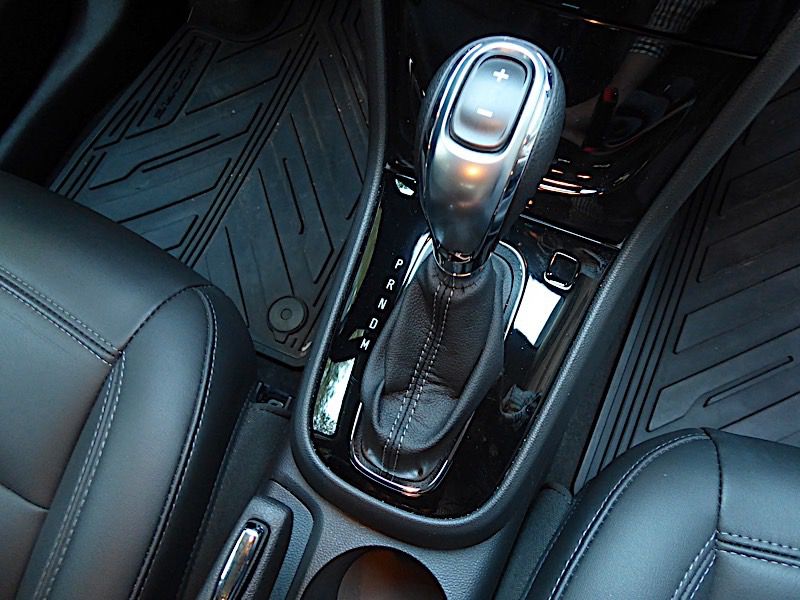
Photo by Ron Sessions
Driver-Assist and Safety Systems
Every Encore includes 10 airbags and antilock brakes with traction and stability control. Blind-spot and rear cross-traffic monitoring systems are standard on Preferred II and higher Encore trims. Sonar-based rear park assist — which beeps ever-more-fervent audible warnings as the rear bumper gets closer to another vehicle or object — is standard on the top-of-the-line Premium.
Forward-collision and lane-departure warning systems are also standard on the Premium model, but these systems only warn the driver and don’t apply steering torque or emergency braking assist if the alerts go unheeded. Likewise, although cruise control is standard on all Encore models, adaptive cruise control that can maintain spacing to the followed vehicle is not available either. A standard backup camera displays an image on the 8-inch infotainment screen, but the Encore is not yet available with the 360-degree surround-view systems fitted on some more expensive luxury models.
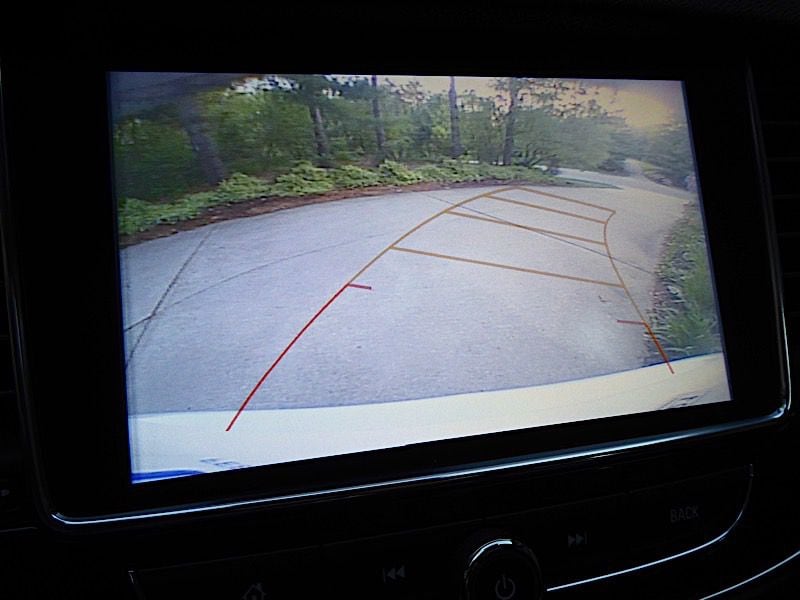
Photo by Ron Sessions
Small Wonder (or Korean Take-Out)
If you haven’t considered a Buick in the past because you thought the brand’s products were more suited to your grandparent’s generation, try an Encore on for size. Developed and built by General Motors’ Korean affiliate, the Encore has a decidedly urban mission.
It’s small enough to zip through traffic and fit in small parking places, yet it’s sufficiently airy and roomy for perambulating friends and life’s stuff. OK, so it doesn’t look much like Buick’s sedans — but maybe that’s at least one reason why the Encore outsells all other Buick models combined.
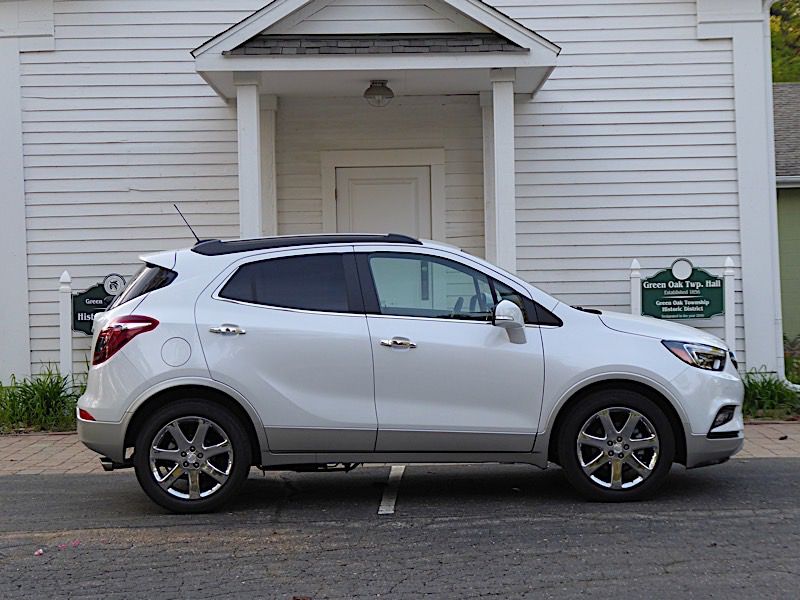
Photo by Ron Sessions